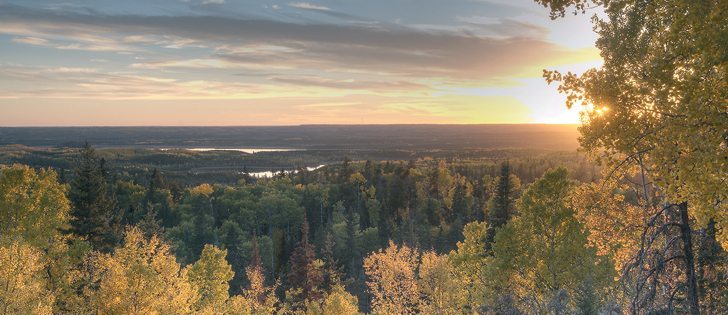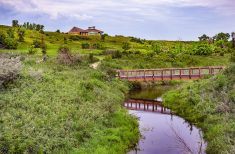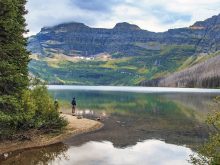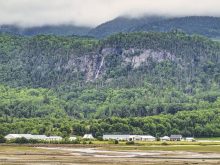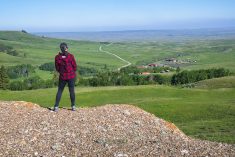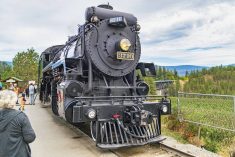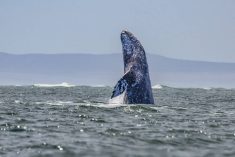The landscape changes dramatically soon after we leave Smeaton, Sask., at the start of the Hanson Lake Road (Highway 106).
The northern edge of the grain belt in eastern Saskatchewan gives way to the boreal forest of Narrow Hills Provincial Park.
It is an exceptional place to experience the powerful effects of 10,000- year-old glaciers, when great ice sheets scoured the land and formed long ridges such as eskers and push moraines. The best way to get in touch with this landscape is to follow an impressive scenic drive and take one of the most delightful short hiking trails anywhere.
Read Also

Know what costs are involved in keeping crops in the bin
When you’re looking at full bins and rising calf prices, the human reflex is to hold on and hope for more. That’s not a plan. It’s a bet. Storage has a price tag.
The Narrow Hills Scenic Drive begins near the park’s core area at Lower Fishing Lake. Interpretive panels along the way relate stories about the geology and history of the hills.
The road starts out smoothly as it steadily climbs the push moraine ridge but soon becomes a narrow, one-lane track that is deeply rutted in places. It could be challenging in spots if your vehicle has low clearance or you’re visiting after a heavy rain.
We wind through thick forest much of the way, but higher onto the ridge, vistas open up over seemingly endless tracts of forested lake lands. A highlight is the view over the Grace Lakes, with its gracefully curving shorelines.
The officially designated scenic drive ends here, although the road continues down the hills to the south.
However, the park doesn’t recommend going any farther because the trail becomes extremely rough and is often not passable in wet conditions. Before modern roads, this track along the ridges was the main access to the hills and lakes.
The best hiking is in the northwest part of the park. To get there, continue north on Highway 106, west on Highway 913 and then follow the signs to the Gem Lakes.
Lakes are scattered throughout northern Saskatchewan, but these jewels of the forest stand in a class by themselves. Rare formations called tunnel valleys formed here as glaciers retreated. Melt water carved valleys as it flowed beneath the ice. Huge blocks of ice settled in the sandy base, eventually becoming lakes when they melted.
The five lakes are small but deep. While practically next to each other, they aren’t connected.
The lakes seem to shimmer like gemstones because of their sandy bottoms and amazingly clear deep water. Colours are accentuated by reflections of the blue sky and surrounding vegetation.
It’s easy to see why the lakes were named Jade, Opal, Pearl, Diamond and Sapphire.
Follow the 5.5 kilometre network of hiking trails to visit all the lakes.
One of the best viewpoints is only a few minutes from the trailhead where a high ridge looks over Jade Lake. The shallow edge of Opal Lake has an iridescent tinge that really is reminiscent of opals.
Another of our favourite spots is Pearl Lake where, if you happen to hit conditions just right, the water appears an almost unreal deep greenish-blue.
Walk-in backcountry campsites are located at Diamond Lake and Opal Lake in case you want to linger longer in this special spot. The lakes are stocked with trout, so freshly caught fish might be another bonus.
We especially like visiting the Narrow Hills in autumn, when colours are at their prime and campgrounds are almost empty.
The main campground is at Lower Fishing Lake, with smaller camps at Zeden, Ispuchaw, and Baldy lakes. Our top choice is Baldy, where only six spacious sites line the water’s edge. During our most recent trip in late September, we had the entire campground to ourselves.
For more information, visit www.saskparks.net.


